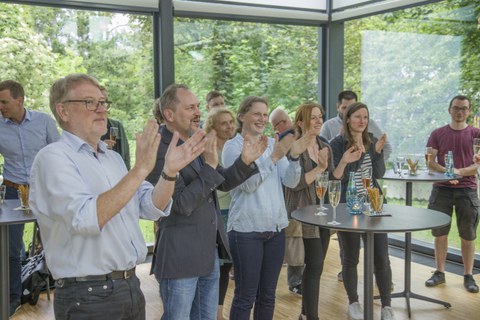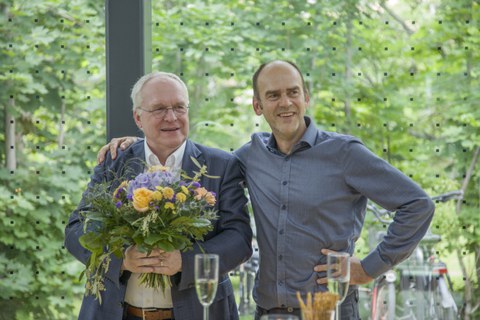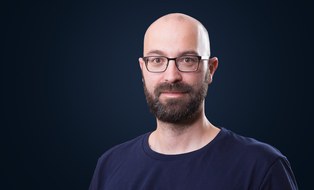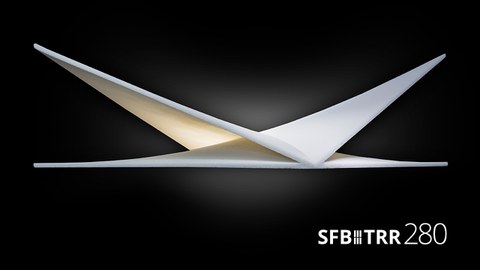May 30, 2024
DFG approves second funding phase for Collaborative Research Center/Transregio on material-minimized carbon concrete structures
The focus is on slender, sustainable structures made of carbon concrete with innovative load transfer concepts and manufacturing methods.
Great joy in Dresden, Aachen and Hamburg. The immense efforts of the last few months have paid off. After a very successful inspection by the expert group and representatives of the German Research Foundation (DFG) in Aachen in March 2024, the project team received the good news on the evening of May 29, 2024: The Collaborative Research Center/Transregio 280 (SFB/TRR) will be continued! The German Research Foundation has approved the next funding phase for CRC/TRR 280 "Construction strategies for material-minimized carbon concrete structures - foundations for a new way of building", in which researchers from TU Dresden, RWTH Aachen University, the Leibniz Institute of Polymer Research Dresden and the University of Hamburg are involved.

Gespanntes Warten auf das Ergebnis der DFG
Carbon-reinforced concrete (CRC) is a new, rapidly developing composite material that will revolutionize innovative applications in the construction industry. It consists of two high-performance components: a high-strength carbon reinforcement and a high-performance concrete and was largely developed in Dresden and Aachen. Despite its growing popularity, its application has so far often been limited to the mere replacement of materials, a trend reminiscent of previous technological advances. Although this approach is already leading to a reduction in the consumption of resources, it hardly exploits the enormous potential of the material. Extensive research since the mid-1990s and the results of TRR 280 in funding phase 1 have shown that CRC has the potential to meet performance and sustainability requirements significantly better than conventional materials. However, it is also clear that exploiting this potential requires the synergy of the high-performance properties of carbon concrete components, material-specific designs and calculation methods as well as innovative manufacturing technologies.
The aim is to design load-bearing structural elements consisting of thin, spatially resolved CRC shells, plates, disks and folded structures that function as perfectly coordinated ensembles. The development of novel structures is closely linked to questions of manufacturability, product-related sustainability assessment and the further development of the composite material itself. Innovative design strategies enable a completely different design language, reduce the consumption of resources and energy and at the same time guarantee a high level of usability, load-bearing safety and durability.

Prof. Steffen Marx (rechts) bedankt sich bei Prof. Manfred Curbach und übernimmt die Rolle des Sprechers in der zweiten Förderperiode.
There will be a change at the top in funding phase 2; the previous spokespersons Manfred Curbach (Dresden) and Josef Hegger (Aachen) will support the CRC in an advisory capacity in future. Prof. Steffen Marx from the Institute of Concrete Structures at TU Dresden will take on the new role of spokesperson. Prof. Rostislav Chudoba from the Chair and Institute of Concrete Structures at RWTH Aachen University will be deputy spokesperson.
The four-year second funding phase starts on 01.07.2024.
Further information, publications and current research results can be found on the project website: www.sfbtrr280.de
Contact Press and Public Relations:
 © Jana Strauch, Stefan Gröschel
© Jana Strauch, Stefan Gröschel
Public relations
NameMr Stefan Gröschel
Send encrypted email via the SecureMail portal (for TUD external users only).
Technische Universität Dresden - Institute of Concrete Structures
Technische Universität Dresden - Institute of Concrete Structures
Visiting address:
BEY Beyer-Bau, Floor 0, Room E 35 George-Bähr-Str. 1
01069 Dresden


